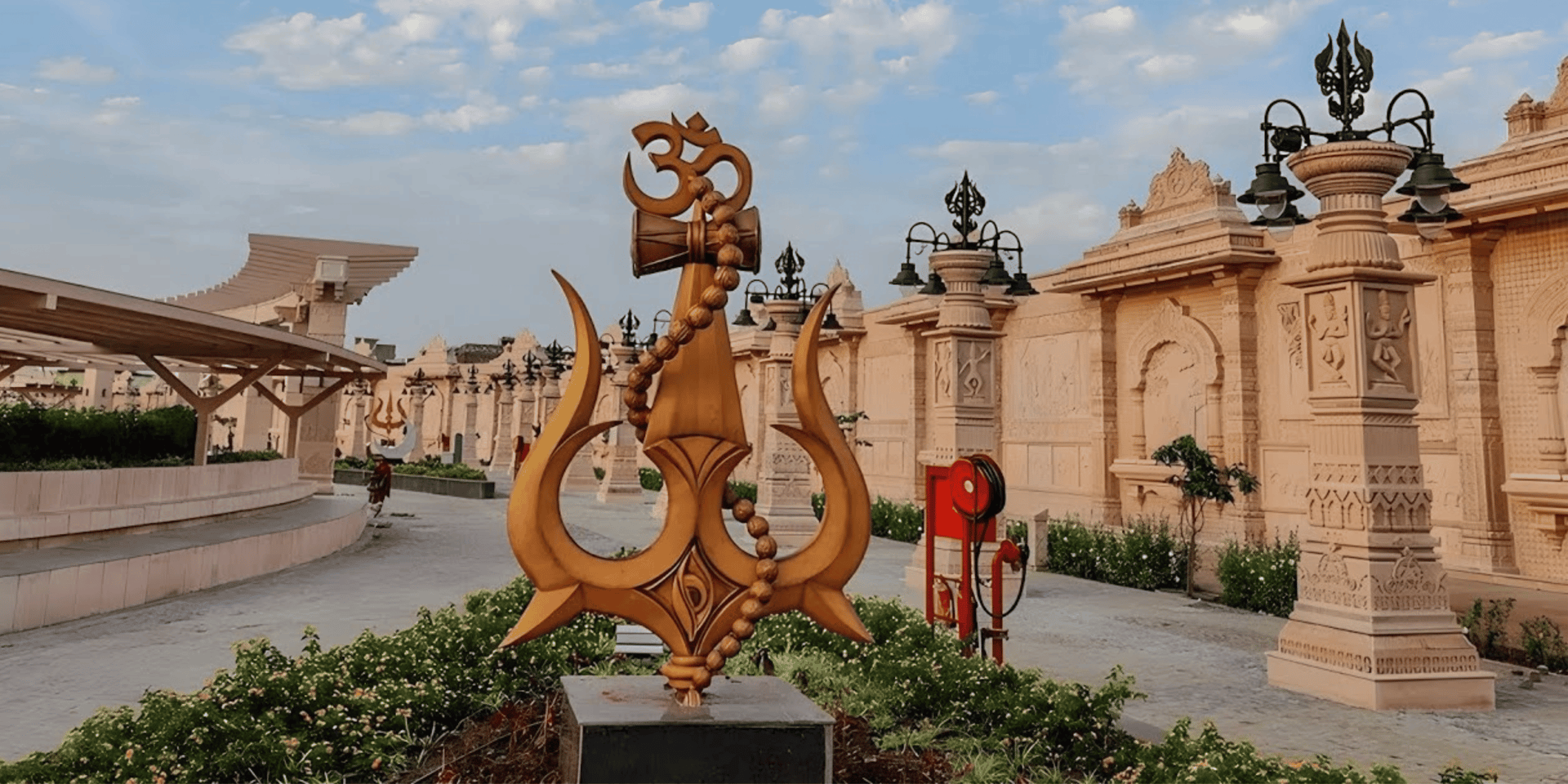
Your Guide to Ujjain’s Top 5 Iconic Temples.
Immerse yourself in Ujjain’s divine atmosphere with a day filled with temple visits, local sights, and cultural experiences, this guide will help you make the most of your time in the city.
Anjali Jain
6 min read
1. Mahakaleshwar Temple
The Heart of Ujjain's Spirituality
Mahakaleshwar Temple is one of the 12 Jyotirlingas and holds immense religious significance. Situated on the banks of the Shipra River, this temple is the most prominent attraction in Ujjain. It’s famous for its Bhasma Aarti, a unique ritual performed early in the morning with sacred ash.


Mahakal Temple Aarti Timings:
Bhasma Aarti: 4:00 AM to 6:00 AM
Dadyodak Aarti: 7:30 AM to 8:00 AM
Bhog Aarti: 10:30 AM to 11:00 AM
Sandhya Puja (Evening Aarti): 5:30 PM to 6:00 PM
Shri Mahakal Aarti: 7:30 PM to 8:00 PM
Shayan Aarti: 10:30 PM to 11:00 PM
Bhasma Aarti: A Unique Ritual
The Bhasma Aarti is the most iconic ritual performed at the Mahakaleshwar Temple. It is the only temple where the deity is worshipped with ash, symbolizing the cycle of life and death. Witnessing this early morning ritual is considered highly auspicious which Starts at 4:00 AM every day.
How to Book Bhasma Aarti
[Ticket Cost: ₹100 per person]
Online Booking:
Visit the Mahakaleshwar Temple official website.
Navigate to the "Bhasma Aarti Booking" section.
Register your details and select your preferred date.
Upload a valid photo ID.
Confirm and make the payment.
Offline Booking:
Visit the Bhasma Aarti Registration Counter at the temple premises.
Provide your ID and complete the registration form. [ NOTE: Carry your original ID & a photocopy ].
Arrive at least 2 hours before the Aarti to secure your spot.
Things to Remember
Men are required to wear dhotis, and women should wear sarees or traditional attire.
Phones and cameras are strictly prohibited inside the temple.
Ensure you arrive by 2:00 AM to get seated for the Bhasma Aarti.
One of the recent additions to Ujjain's spiritual infrastructure is the Mahakal Lok Corridor. This project was inaugurated in October 2021 by Prime Minister Narendra Modi and aims to enhance the spiritual and cultural experience of visitors. The corridor is designed in such a way that it connects with the Mahakaleshwar Temple which is a key component of Ujjain’s urban development.
Details of the Mahakal Lok Corridor:
Length: The corridor stretches around 1 km and is lined with beautiful statues, fountains, and gardens.
Inauguration: It was inaugurated in October 2021 and has become a major attraction for pilgrims and tourists alike.
Key Attractions: The corridor features massive sculptures of deities, including Lord Shiva, along with detailed murals depicting various episodes from Hindu mythology.
Facilities: The corridor is equipped with wheelchair access and resting zones for senior citizens, making it more accessible to all types of visitors. The Corridor also have facilities like E-Rikshaw and E-Bhasma Aarti darshan.
Prohibited Items: To maintain the sanctity of the area, items like Camera / Tripods , plastic bags, alcohol, and food are prohibited within the corridor.
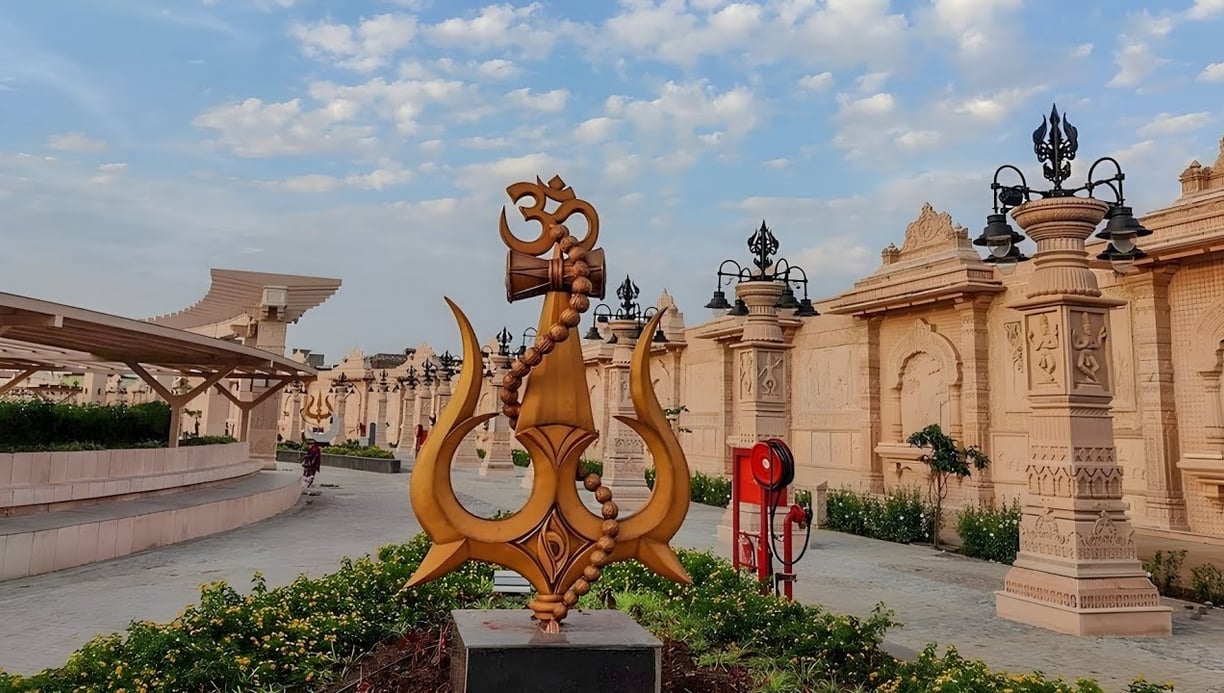

Mahakal Lok Corridor
2. Harsiddhi Temple:
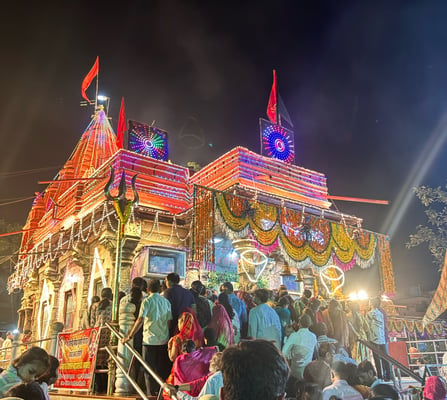

The Harsiddhi Temple is one of the holiest and most revered temples in Ujjain, dedicated to Goddess Harsiddhi, a form of Shakti (divine feminine energy) and Durga. It is located on the southern banks of the Shipra River, making it an important landmark in the city. The temple is one of the 51 Shakti Peethas — sacred spots associated with the divine mother — and holds special significance for Hindus, especially those seeking spiritual empowerment and blessings for strength, health, and prosperity.
The legend surrounding the temple traces back to ancient texts, with one of the most prominent stories related to Lord Shiva and Sati. According to mythology, Goddess Sati (Shiva's consort) self-immolated in the yajna (sacrificial fire) conducted by her father, Daksha. Her body parts fell across different parts of India, and Ujjain became the site where the right elbow of Goddess Sati fell, symbolizing the presence of Shakti and giving rise to the Harsiddhi Temple.
Aarti Timings:
The temple holds daily aartis and rituals to honor Goddess Harsiddhi:
Morning Aarti: 5:00 AM – 6:00 AM
Evening Aarti: 7:00 PM – 8:00 PM
These aartis are performed with deep devotion, Lighting Diyas and sound of bells, accompanied by the chants of devotees.
One of the most unique and spectacular features of the Harsiddhi Temple is the Diya Towers. These towers are large, towering structures where hundreds of oil lamps are lit everyday during evening aarti. This ritual of lighting lamps is significant as it symbolizes the victory of light over darkness and good over evil. The temple management ensures that thousands of oil lamps are lit in the Diya Towers, casting a sacred glow over the temple complex.
During the Navratri festival, when the temple is beautifully illuminated with these lights and lamps, the sight is truly mesmerizing, and devotees from all over the world come to witness this divine event. The lamps create a spiritual atmosphere that is believed to cleanse the soul and purify the mind.
Proximity to Mahakal Mandir:
The Harsiddhi Temple is located approximately 1.5 kilometers from the famous Mahakaleshwar Temple, making it easy to visit both temples in one trip.
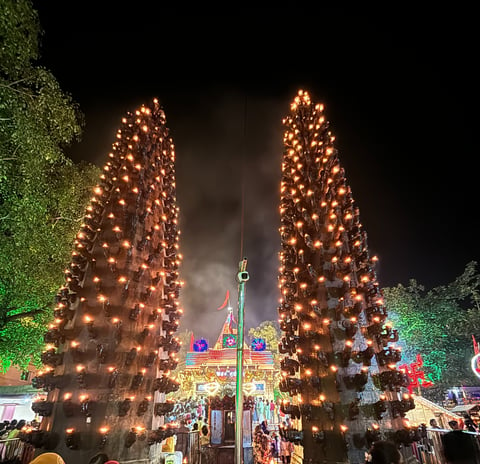

The Diya Towers [ Deep Jyoti Stambha]
3. Kal Bhairav Temple
Dedicated to Lord Bhairav, a fierce manifestation of Lord Shiva, the Kal Bhairav Temple is one of the most unique temples in Ujjain. It is believed that Lord Bhairav is the protector of the city, and the temple plays a vital role in safeguarding Ujjain. The temple is famous for a distinctive and somewhat unusual offering ritual — liquor.
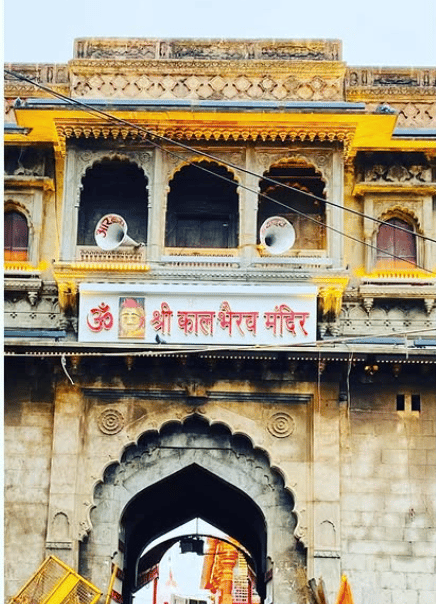
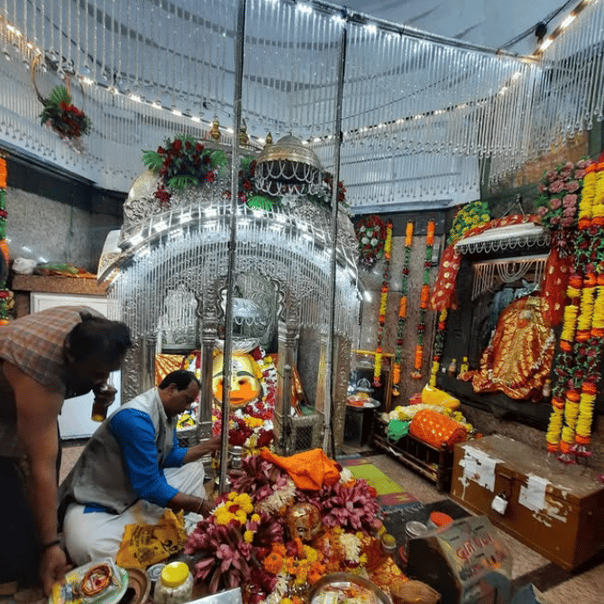
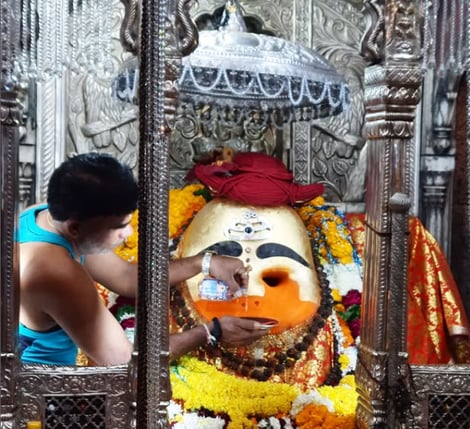

It is customary for devotees to offer liquor to Lord Bhairav as part of their worship. Devotees bring liquor bottles and pour them into the offerings plate as a symbolic gesture of appeasing the deity. The temple has become famous for this practice, drawing many visitors curious about the ritual.
One of the fascinating aspects of the Kal Bhairav Temple is the magical liquor slurping sound. This phenomenon occurs when the liquor is poured into the offering plate, but instead of flowing out, a slurping sound is heard. It has intrigued both scientists and visitors alike, as there are no visible pipes or mechanisms that explain the sound. Research suggests that it's related to acoustic properties, but its exact cause remains a mystery.
Aarti Timings:
Morning Aarti: 4:00 AM – 5:00 AM
Evening Aarti: 6:00 PM – 7:00 PM
Offering Liquor:
4. Mangalnath Temple
The Mangalnath Temple is dedicated to Lord Mangal (Mars), and is believed to be the birthplace of the planet Mars in Hindu mythology. The temple is important for those who seek remedies for planetary doshas and ill effects associated with Mars. It is believed that visiting this temple and offering prayers to Mangal can bring prosperity and success.
Poojas for Wellbeing:
There are various types of poojas performed at the Mangalnath Temple, such as:
Mangal Dosh Pooja: Performed to neutralize the ill effects of Mangal Dosha (a malefic placement of Mars in one's horoscope).
Navagraha Pooja: A pooja that seeks blessings from the nine planets, with special attention given to Mangal.
Mangal Jayanti Pooja: A special ritual performed on Mangal Jayanti, the day dedicated to Lord Mars.
These poojas are believed to help improve one's health, career, and relationships, especially for those facing challenges related to Mars.
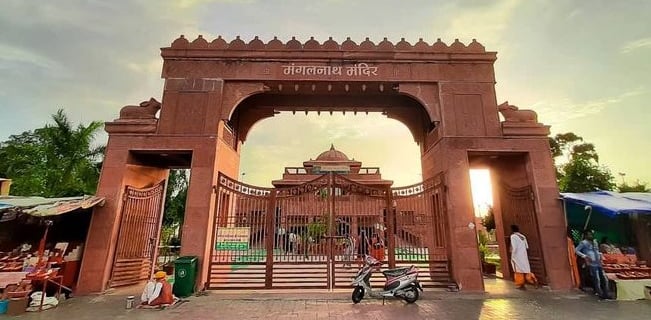

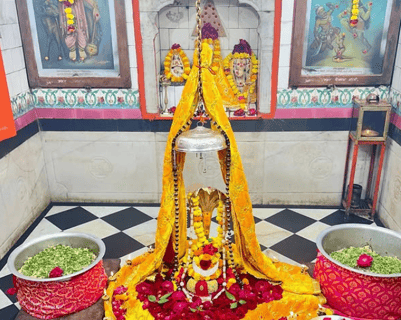

5. Siddhavat Temple
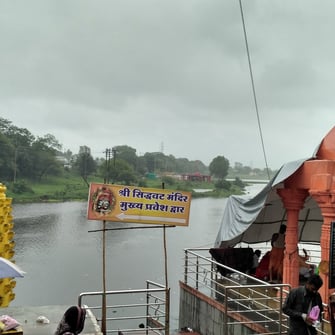
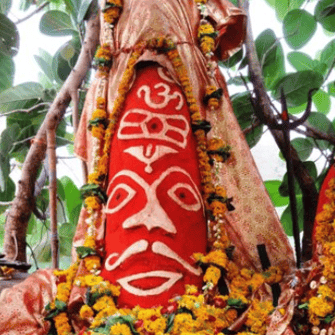
Siddhavat is one of the most significant and revered spiritual spots in Ujjain, known for its sacred Peepal tree (Ficus religiosa), located near the Shipra River. This sacred tree holds a prominent place in Hindu mythology and is widely regarded as a place where one can receive spiritual benefits, especially by performing certain rituals and prayers.
The name Siddhavat comes from the Sanskrit word 'Siddhi', meaning accomplishment or spiritual perfection. It is believed that worshipping and meditating under the sacred Peepal tree at Siddhavat helps individuals achieve spiritual siddhi (spiritual success or power), hence the name "Siddhavat."
The temple is located near the banks of the Shipra River and is known for its peaceful ambiance. Devotees visit Siddhavat to perform rituals for achieving spiritual and material success. Many believe that taking a dip in the holy water here can purify the soul and bring prosperity.
Ujjain, with its deep-rooted history, spirituality, and unique rituals, offers visitors an unforgettable experience. Each temple has its own charm and significance, from the mystical rituals of Kal Bhairav to the serene atmosphere of Mangalnath and Siddhavat. The temples in Ujjain are not just places of worship, but also offer fascinating stories, spiritual lessons, and a glimpse into the rich heritage of one of India’s most sacred cities.
This guide covers the Top 5 must-visit temples in Ujjain, with a detailed focus on the Mahakaleshwar Temple, including its famous Bhasma Aarti which is a must visit for a soulful experience.
Get in touch
Address
Sector-A, 5/21, Mahakal Vanijya Kendra, [HOTEL ANJALI], Nearby Nanakheda Bus Stand, Ujjain, M.P.
Contacts
8103209325, 9179997194
anjalihotelujjain@gmail.com